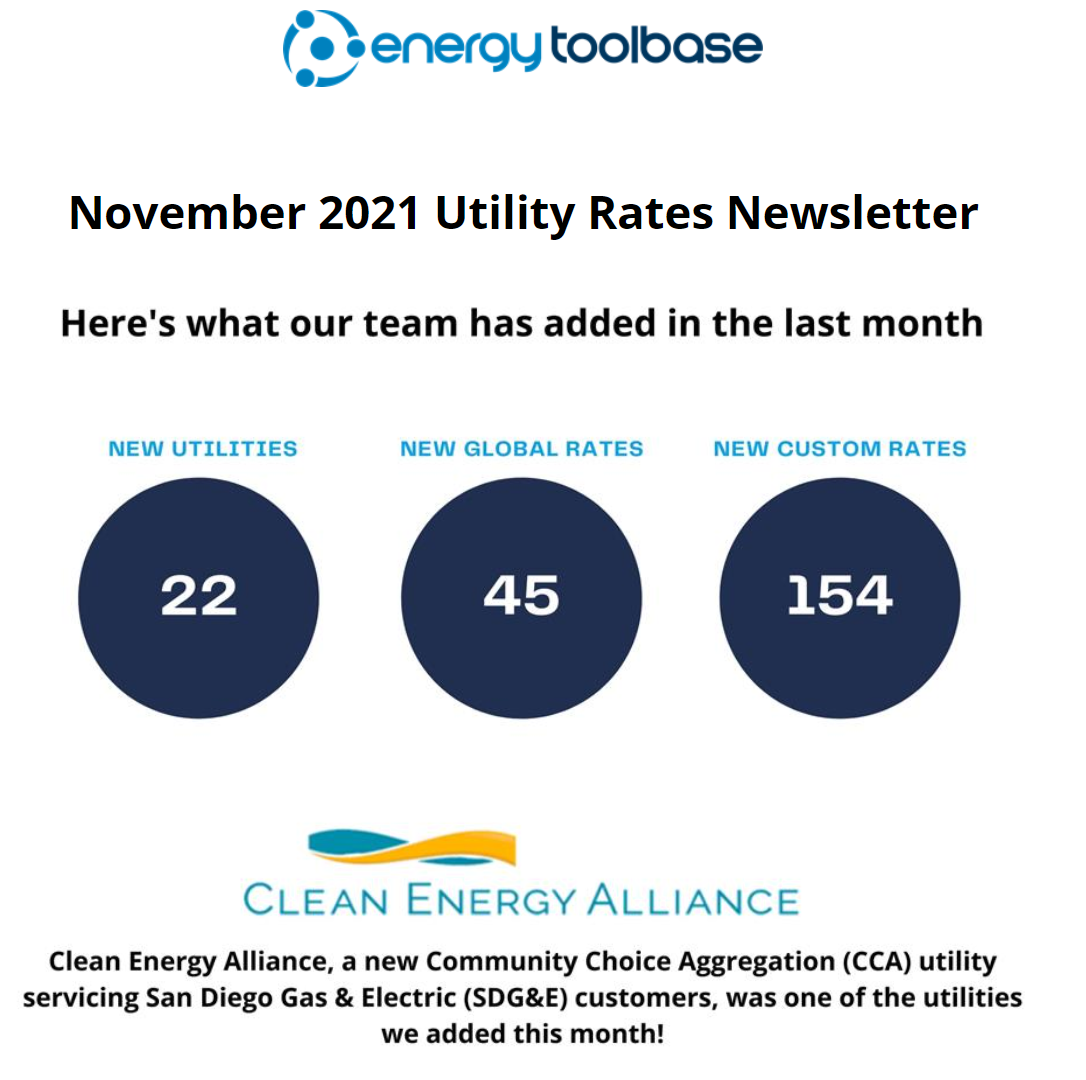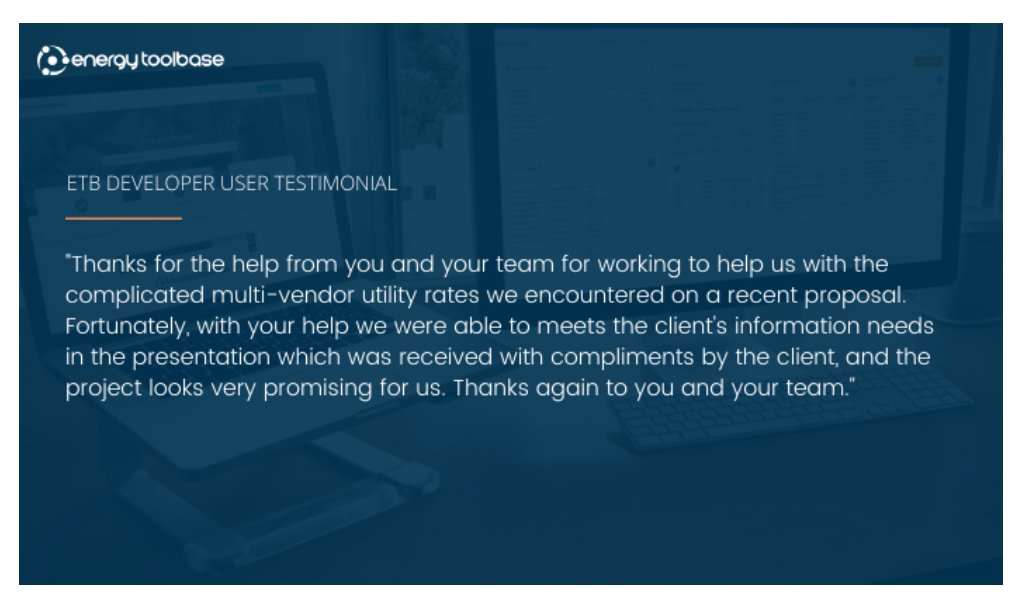IMPORTANT MONTHLY UPDATES & ANNOUNCEMENTS
SDG&E November Update
California investor-owned utility (IOU) San Diego Gas & Electric has updated its rates to support a new program and fund new accounts. According to Advice Letter 3855-E, these updates were implemented to meet revenue requirements that align with Assembly Bill 841: The School Energy Efficiency Stimulus Program (SEESP). This bill was signed into law on September 30, 2020, in order to improve ventilation and plumbing fixtures within schools to prepare for operations during the Coronavirus (COVID-19) Pandemic. This caused the Commission to approve recovery costs for investor-owned utilities (IOUs) to support this program.
Additionally, this update is rooted in the newly implemented Liability Insurance Premium Balancing Account (LIPBA) that SDG&E recently got approved by the California Public Utilities Commission (CPUC). Per Advice Letter 3855E, LIPBA is designed as a “two-way balancing account for liability insurance premiums”. SDG&E has been authorized to collect $47.68 million for SEESP and $10.29 million for the LIPBA from ratepayers starting Nov. 1st, 2021, and spanning over a 14 month period.
When compared to the previously effective June 2021 rates, customers will see on average an increase of 2.41% with this November rate change. The Customer, Energy, and Demand charge components were affected by this update. The bulk of the overall increase is a result of a rise in the Public Purpose Program (PPP) line item, a non-bypassable charge (NBC) solar customers are responsible for under California’s currently effective net-energy metering (NEM) tariff, commonly referred to as NEM 2.0. The PPP showed to have an individual rate increase of 14% to 17% with this update.
The demand (kW) charges of commercial and industrial (C&I) rates, such as well-known AL-TOU, experienced significant increases. When looking at the time-of-use (TOU) demand charges of AL-TOU (secondary), the summer On-Peak Distribution demand charge rose from $17.32 to $19.20, resulting in the individual growth of 11%. The non-coincident (NC) Distribution demand charge decreased by 7%, to compensate for the newly adjusted TOU charges most likely.
SDG&E’s November 2021 rates are readily available in our ETB Developer platform. Please do not hesitate to reach out toutilityraterequest@energytoolbase.com with any questions.
Connecticut Light & Power Implements New Solar Friendly Rates
This November, Connecticut Light & Power has introduced two new rate options designed to be advantageous to small commercial customers with solar. Rates 27A (Small Time-of-Day General Electric Service Alternative) and 30A (Small General Electric Service Alternative) are available on an optional basis to customers with a maximum demand that is less than 200kW.
When compared to their traditional counterpart schedules (27 and 30), these alternative rates entail lower demand (kW) charges with higher energy (kWh) charges. The Distribution Demand Charge of solar-friendly rates 27A and 30A is roughly 36% less than standard Small General Service rates, a decrease of over $5 per kW.
Users will see that our team has already added 27A and 30A to our rates database. When running small commercial scenarios for this utility, users can utilize the Rate Switch function within our platform to compare costs and savings potential between the utility’s standard Small General Service rates and the new solar-friendly alternatives. When conducting a simple rate comparison for a Small Office load profile, our team noted a decrease is the buy-back period when switched to one of the new rate offerings post solar.
The Generation Municipal Surcharge (GMS) assessed by Southern California Edison (SCE) has increased as of October ’21 billing. This surcharge only applies to Direct Access (DA) customers whose energy is supplied by a third-party entity such as Constellation, or those taking service under a Community Choice Aggregation (CCA) utility such as Lancaster Choice Energy. SCE utilizes this surcharge factor to collect franchise fees through these separate entities.
The GMS has not been updated since 2019, the October update resulted in an increase from 0.009144 to 0.009261. Our utility rates team carefully calculates out the GMS for each rate, as the GMS factor applies to SCE’s Utility Generation (UG) and Department of Water Resources Bond (DWREC) charges, components of the energy and demand charges listed within each rate’s respective tariff. Users will notice the GMS line-item present within all the Southern California Edison CCAs that we maintain globally within the ETB Developer platform.
Our in-house rates team is here to help our users with any project. We love hearing your feedback on how we assisted your team!
November 2021 Frequently Asked Question (FAQ)
Is 12 months’ worth of bills necessary for custom rates?
When requesting a custom rate, our team asks for twelve months’ worth of billing due to various rate complexities and billing irregularities that may be present. Fluctuating supply charges, rate structures that require manual calculations, and customer-specific charges are a few examples of situations that may warrant a custom rate.
Our team creates many custom rates under utilities in Illinois, particularly Commonwealth Edison (ComEd). The state of Illinois is a deregulated market, meaning that generation owners can sell their electricity at wholesale to retail suppliers, creating a more diverse energy portfolio for customers to choose from. Within this type of market, customers tend to have their electricity supplied by a third party, which tends to be contracted at a lower rate, sometimes changing monthly. Without a year’s worth of bills, our team does not have the opportunity to account for such fluctuations or seasonality of supply charges, which then has the potential to cause “discrepancies” within an analysis.
We understand that it can be difficult for our users to obtain 12 months’ worth of bills for every project. Although we encourage this practice, our team will utilize whatever billing information can be provided and create a custom rate as accurately and transparently as possible.
For rate requests or general questions for our rate team, please email: utilityraterequest@energytoolbase.com





